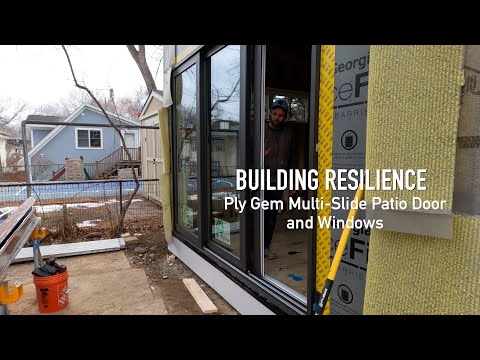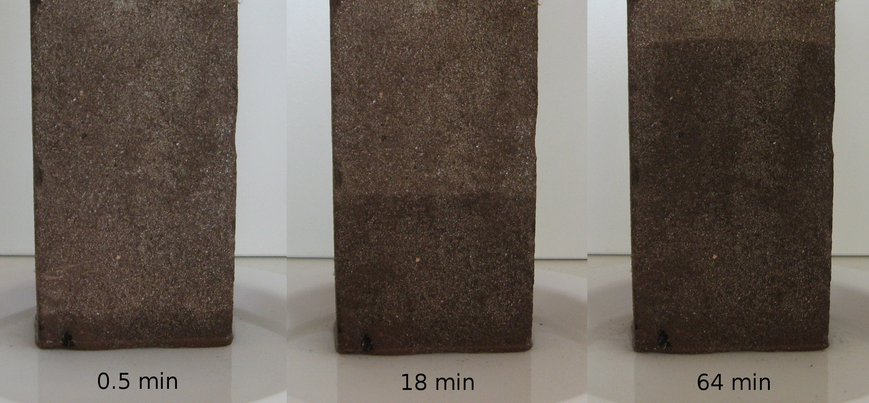This video is from the PTC Live demonstration stage at the 2024 International Builders' Show, where we demonstrated how to install two types of Everlast siding: traditional lap siding and board and batten siding. Both are back-ventilated and both are made from durable PVC.
Video transcript:
Install trim before installing Everlast siding
Well, the first step is you always want to put your trim up first. So, as we did here, we put the corner, and these are all pocketed trims. You're going to be running in and terminating in the pocketed trim. Same with your blocks and vents. You need to plan for those as well, to leave room for the movement.
So, we have what we call our two-piece trim. There's a receiver, and then there's a Snap-On piece that matches the color. This final piece you would snap on the end. What that does for you is, when you put all your trim up, you're putting your trim up first. But you're not creating interference trying to get that panel inside these pocketed trims. It leaves it all nice and open, so you can make sure you're getting your gaps proper. When you're finished, these pieces all snap in and lock in afterward. We'll show you when we get to that.
This piece here, this is kind of an example of what would snap into that receiver, correct? And then at the top wall here, we didn't talk about it at the bottom where we're going at an angle, but there is this piece right here, this first piece. What is the function of this?
Siding installation begins with a starter strip
So, this is our starter strip. We developed and designed our own starter strip. It's a rigid PVC, so you don't have to worry about the corrosion factor, moisture issues with corrosion, and that type of thing. Plus, the way we designed it, it hides up in that backside nicely. It's a gray color, so it shadows real nice. It's not that shiny metal typical starter that people use. As these guys get going, you'll see the starter actually has a receiver hook on it. Your siding just sets in there, and it has a leg on the back that looks like a starter strip. That's your starter. As you can see, it has the little hook here, and then you also have your receiver on your siding panel, and this locks right up into there like that. So, it's nice and tucked in, it's nice and shadowed in behind there, and it gives you that gray comb. It's pretty invisible. I mean, it's pretty hard to spot.
fastener slots allow movement of siding
So, what you want to do is a floating system. We give you plenty of room on the slot. Even though it doesn't move that much, we give you room. Try to hit as close to the center of those slots as possible. You don't want to fasten it tight; you want to fasten it down, giving yourself about 30 seconds or so of space between the head of that fastener, whether it be a nail or a screw. The other thing is to use corrosion-resistant type fasteners. That way, the panel can move freely. It's pretty nice and easy to work with. One guy can carry it when he loads it; you don't need two guys holding it. Once he gets it on there, he lets go of it, and that's it. He's hands-free, he can get his fasteners and go.
So, we're doing a loose attachment, using a corrosion-resistant fastener, whether that be a nail or a stainless steel fastener, screw, or nail. Yep. And not pinning it, we're letting... I just watched Joseph make sure that it could slide a little bit back and forth. He's making it slide back and forth, and that accounts for the little bit of expansion and contraction that's going to continue throughout the life of the product. It's going to have that little bit of movement during cold weather and hot weather, especially if you're in the big swing climate range. You want to be able to have that float nicely.
Butt joint bracket keeps seams tight
Alright, so Joseph is looking at us with anticipation. We've been chatting too much. He's ready to show us how to do a butt joint. So, this bracket is very special to your product, yes?
So, two things that you need to remember: one is it needs to float, don't fasten it tight. Second is the joint. The idea is we don't want these joints opening up, right? So, we have a bracket, which is actually a pre-loaded bracket, which is nice for the guys installing. They don't have loose screws to deal with. We actually changed the bracket so it has a little rubber grommet that holds the screw in place. If you see the brackets, the screws are on there. You don't have to worry about it, and this grommet is only used to hold that screw. I don't care what happens to that grommet once you tighten it. It's not used for anything but holding that screw. It seems like a little thing at first, but I have to tell you, when we actually work with this product, having a bracket that's preloaded like that with the right length fastener, with that little neoprene gasket that can get deformed, is not a big deal. It's the difference between fishing for the right screw and using, substituting for some other screw that might be too long, that might then go into the substrate and pin the product, keeping it from moving correctly.
So, the convenience of that, and then there's a little notch on it that you line up with. You've made it kind of dummy-proof here, right? There's a notch, you line that up, you screw this into the solid material, and then your other piece next to it, and that's it. It won't separate, and that's what holds these joints together. The whole thing floats as one.
Board and Batten siding is similar but different
Now, the board and batten install is a little bit different from the siding install. For the lap, we both are going to let them float; that's important for both of them. But the board and batten is a little different in that we actually put the fastener towards the top of the slot. So, what you're doing is you're planning for everything to expand up. You want to figure out where you want the bottom to be. However you do that with a transition, or you may do it with a belly band board, or you may just do a Z-flash. So, you'll know where that is. Your first piece is actually your starter, so you do not need a starter strip with this. Always make sure you have a fastener in the bottom. Make sure you plumb it square, especially on that first one. And then, the rest of it is pretty easy. It goes up fast. Maybe check a couple of courses down to make sure you stay in plumb and lock it in. Make sure you feel it net in. You can kind of feel it when you lock those two together.
When he does the next one, kind of show them how that works there, buddy. I love that David's checking each one of these to make sure that it's got some free-flowing action up there. When he puts this up, it'll get that lined in, and it'll kind of fit in. You can feel that, can't you, when it kind of nests in there? Looks nice.











